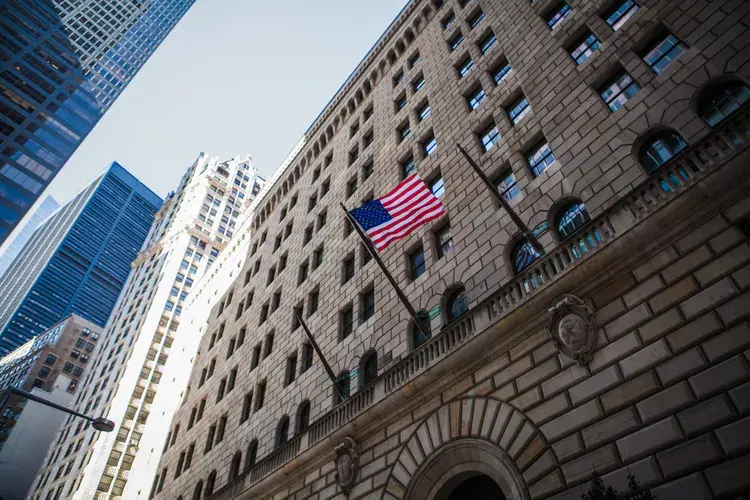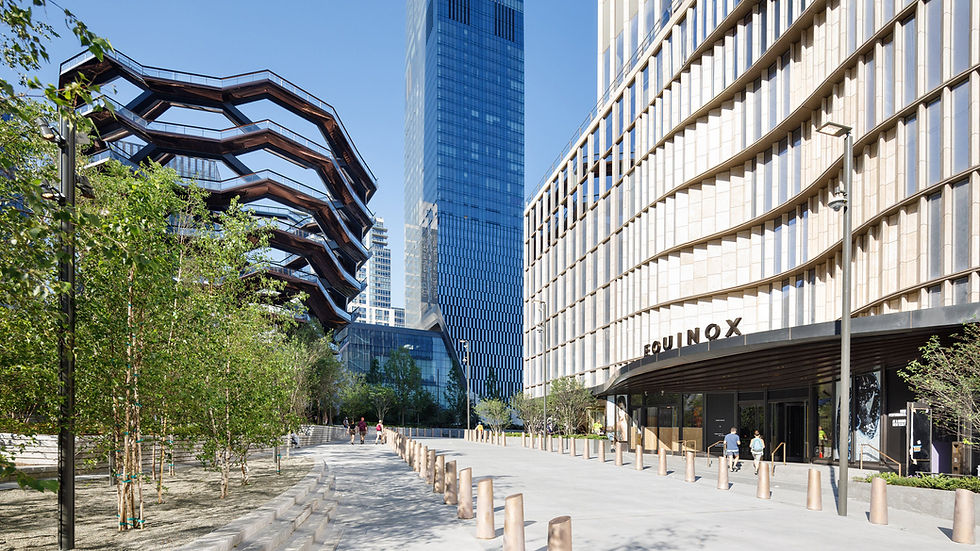Weekly Market Report - September 18, 2023
- Norman Bobrow
- Sep 17, 2023
- 5 min read
***
Amazon has officially opened its new Fifth Avenue office building in New York City, three years after buying the former Lord & Taylor department store building from WeWork for nearly $1B. The company has implemented a three-day-a-week office policy, tracking employee locations and contacting those suspected of working remotely too frequently. Amazon's employee office presence has been increasing each month since May, with the company drawing a line in the sand favoring in-person work. The building has had a journey from department store to modern-day workplace, with the former Lord & Taylor building opening as Lord & Taylor's flagship store in 1914. Amazon paid $978M for the building and began renovations, which turned out to be a complicated process. About 2,000 of Amazon's employees are assigned to the building, a fifth of the company's current employee headcount in Manhattan, Queens, Brooklyn, and New Jersey. The former Lord & Taylor building has been adapted to shifts in worker demands and behavior, with a focus on collaboration space and original artifacts.
***
Occupancy in Big Apple increased after the holiday, but fell from a year ago
Office occupancy in New York City increased by 4.3 percentage points to 42.5% after Labor Day, but this year's end-of-summer increase leaves the occupancy number well below the 49% of workers who returned to the office in the week after Labor Day last year. Dallas, Austin, and Houston all saw declines in occupancy from the Wednesday before Labor Day to the one after, with Dallas having the biggest drop at about 52%. Austin slipped to nearly 58%, and Houston was just shy of 60%. Texas has led the country in return to office so far this year, so it had more gains to give back. In California, San Francisco saw post-Labor Day occupancy drop 1.5 percentage points to 40%, while Los Angeles slid 1.2 points to just under 48 percent. Chicago's metro office market saw occupancy decrease 0.7 points to 50.6 percent. Across the 10 cities tracked by Kastle, the average occupancy last week was 40%. It's become an annual event for pro-office groups to look toward the beginning of fall for signs of an attendance comeback, though some major stakeholders are acknowledging that the return to work is not playing out as they had hoped.
***
Sales slowly materialize as some sellers finally accept much lower prices
San Francisco's office market, the hardest hit in the U.S. since 2020, is beginning to show signs of life. The rapid adoption of remote work by technology companies, increased crime, and other quality-of-life concerns have weakened the city's business district. However, the office market is now seeing progress for the first time since the pandemic. Company searches for office space in the city are at their highest levels in years, and firms in the growing artificial-intelligence industry are leasing large blocks of space. Investors have purchased or agreed to purchase five major office towers in recent months, making 2023 the most active year for sales since 2019. These sales are helping determine the value of San Francisco's office stock, helping landlords determine the price tags to put on their properties if they want to sell and inform investors of how big a discount to expect. The recent sales activity is part of the adjustment that San Francisco's chief economist, Ted Egan, has been waiting for.
***
One in 10 home sellers cite their company’s return-to-office mandates as a reason for relocation.
A survey by Redfin reveals that 10.1% of home sellers are motivated to relocate due to return-to-work policies, with major corporations like Amazon, Apple, Goldman Sachs, Google, JPMorgan Chase, and Meta asking their employees to return to the office at least part-time. Despite high mortgage rates, factors such as space, climate, change, and social issues are still influencing movers' decisions. The most common reasons for moving include more space, living closer to family, lower living costs, and better deals on homes. Nearly 1 in 5 respondents with plans to sell their home in the next year want to live in a place better aligned with their views on social issues, while around 1 in 10 plan to move due to discrimination or climate change concerns. Redfin chief economist Daryl Fairweather emphasizes that real estate is about priorities and compromise, with some homeowners opting to trade their low mortgage rates for a safer neighborhood, lower taxes, and neighbors with similar political views.
***
Class C buildings in Manhattan are facing an existential crisis, according to landlords, tenants, and brokers. As hybrid work reduces the need for square footage and layoffs impact payrolls, Mayor Eric Adams is focusing on converting obsolete office buildings into housing. Early-20th-century structures with scarce amenities struggle to compete for tenants in a strong market. As Manhattan's vacancy rate is pushing 20%, Class C properties may be the ultimate low-hanging fruit for conversions. There are at least 1,000 Class C buildings scattered across Manhattan, with several hundred in Midtown, especially the blocks west of Fifth Avenue. Some classic Class C buildings, such as No. 34 and 20 W. 37th St., are struggling with vacancy rates of 50%. The darkened state of these buildings may be due to a weak market or poor management by the owner, Neuss Group, an Argentinian company that purchased the building in 2006.
***
Office recovery has seen a slow and steady progress, with visits to the Placer.ai Nationwide Office Index in August 2023 being the highest since February 2020 and 35.2% lower than in August 2019. This is part of a larger trend, with office visits being 41.5% lower between January and May 2023 but shrinking to 36.1% between June and August 2023. Year-over-year office visitation numbers indicate that the return to office story is still being written, with office visits consistently exceeding 2022 levels by double-digits. Manhattan, Miami, and Washington, D.C. lead the return to office, with Yo4Y visit gaps of 23.6%, 26.5%, and 30.1% in August 2023. Boston has stayed ahead of other cities all year, but its lead has narrowed since January 2023, and its Yo4Y office visit gap stood at 35.9% in August.
Dallas has climbed up to fourth place with an August visit gap of 35.7%. California cities remain at the bottom of the pack, with Los Angeles and San Francisco seeing August 2023 visits down 43.7% and 52.7%, respectively, relative to August 2019. However, this also represents an improvement from the 48.9% and 63.8% January 2023 Yo4Y visit gaps for Los Angeles and San Francisco, respectively, indicating that office recovery is also underway in the Golden State. As office mandates become more normalized, the return to office trends are likely to continue.









Comments